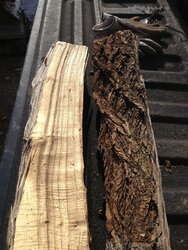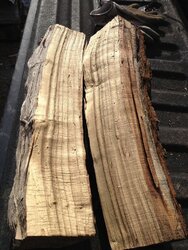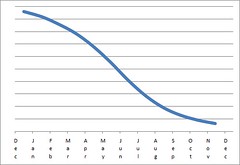Alright, this stuff has been seasoned for 16 months and I am getting 37% from my moisture meter on it. Red oak that I got at the same time in 2011 is giving me a lower reading than this stuff, and that wasn't a really big split. Was wondering why it felt so heavy and why it was burning so terrible.
Thought I was 100% sure what it is, but now I have my doubts.
Thought I was 100% sure what it is, but now I have my doubts.






